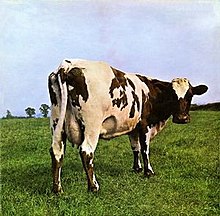 This post examines the production and distribution of milk in Ontario. First I'll describe how the free market would handle such a thing, then I'll go over how it's centrally planned instead.
This post examines the production and distribution of milk in Ontario. First I'll describe how the free market would handle such a thing, then I'll go over how it's centrally planned instead.Some may argue that if dairy farmers sold milk on the market all at once, or even sporadically, speculators would take advantage of the low prices. Hoarding the milk for higher prices later, the speculators hurt the consumer and the farmer. So in comes government and its bureaucracy to keep those evil speculators at bay. By controlling the production and distribution of milk, the government is able to keep prices stable.
While its true that the bureaucracy keeps milk prices stable, it is at a high cost. Here's how the free market would work:
Farm prices, particularly milk, fluctuate in a market economy. Ideally, all prices and wages would fluctuate if the market were completely free. Milk price, for the sake of argument, fluctuates extremely in either direction for whatever reason. Speculators, looking for profit, buy up this milk commodity until no further opportunities for profit present themselves. They begin to sell when they fear future loss. The results are stabilized prices.
 Example – Each farmer is unaware of his competitor's supply. So there's an incentive to produce a lot of good quality milk. As the milk reaches the market speculation grows regarding future prices. This gives speculators an incentive to maximize profit by accurately predicting future milk prices. The less volatile milk prices are, the higher chance of profit for the speculators. As inefficient speculators are weeded out by competition, the increased efficiency within the speculation business helps the farmers.
Example – Each farmer is unaware of his competitor's supply. So there's an incentive to produce a lot of good quality milk. As the milk reaches the market speculation grows regarding future prices. This gives speculators an incentive to maximize profit by accurately predicting future milk prices. The less volatile milk prices are, the higher chance of profit for the speculators. As inefficient speculators are weeded out by competition, the increased efficiency within the speculation business helps the farmers. Profits made by dairy farmers reflect their skills like the amount and quality of milk they produce – rather than market fluctuation risks borne by speculators.
With milk external factors like insurance and storage costs come into play. Taking this into account, speculators can further benefit farmers by paying too much for something. Over estimating prices rewards farmers at the expense of speculator's profits.
It's a nice little system. Completely unregulated, subsidized or managed by any central authority. Instead of destroying milk or capping the number of cows – as we'll see – the free market rewards dairy farmers for efficiency in milk production and speculators for stabilizing milk prices in hopes of future profit.
Here's how the system works in Ontario:
The Ontario Milk Act mandates the Dairy Farmers of Ontario to co-run the milk business via quotas. The quota system essentially uses “the quota” as a license to milk cows.
There are two types of milk quotas in Ontario. The production quota and the marketing quota. The former prevents dairy production from exceeding a certain amount that can be sold in the market. The marketing quota is the DFO's attempt to stabilize milk prices year-round by controlling how many cows are producing milk at any given time.
Come to think of it, the DFO bureaucracy has a lot of authority. They can force farmers to dispose of extra milk, buy the milk at a reduced level (at the farmer's expense) or take it without compensation. The DFO also has the authority to stop farmers from selling outside the quota system. This includes surpluses and independent farmers not interested in working with the DFO.
In Ontario force is used to violate private property rights in an attempt to stabilize prices.
And for the most part, the bureaucracy succeeds in keeping milk prices stable. But at what cost? If purchasing extra quota is too costly and farmers producing excess milk can't curtail production then killing cows may become necessary.
Last month dairy quotas cost $25,000.00. Quotas are typically represented by a kilogram of daily butterfat, or one kilogram per cow. The high price of entry for new dairy farmers acts a disincentive. Compare the entry for milking cows to having turkeys: $2.80 or chickens: $9.00.
Marijuana is big business. Anybody who grows the plant professionally knows the risks involved. Not just in growing and selling an illegal plant, but in the inherent risks of the market economy. Like farmers of old, marijuana growers rely on private speculators to stabilize the price of the crop until next harvest. This is how the market operates without the use of force. Even in spite of state coercion, the free market still thrives.

Clearly a free market in milk is more desirable, yet farmers that benefit from the current system are unlikely to relinquish control. Eventually the problem will work itself out, as socialism always fails and ideas outlast governments. If milk shortages or high prices are a result of economic intervention, consumers are more likely to purchase milk from the black-market, or the counter-economy. That is, farmers selling non-quota milk without DFO approval.

No comments:
Post a Comment